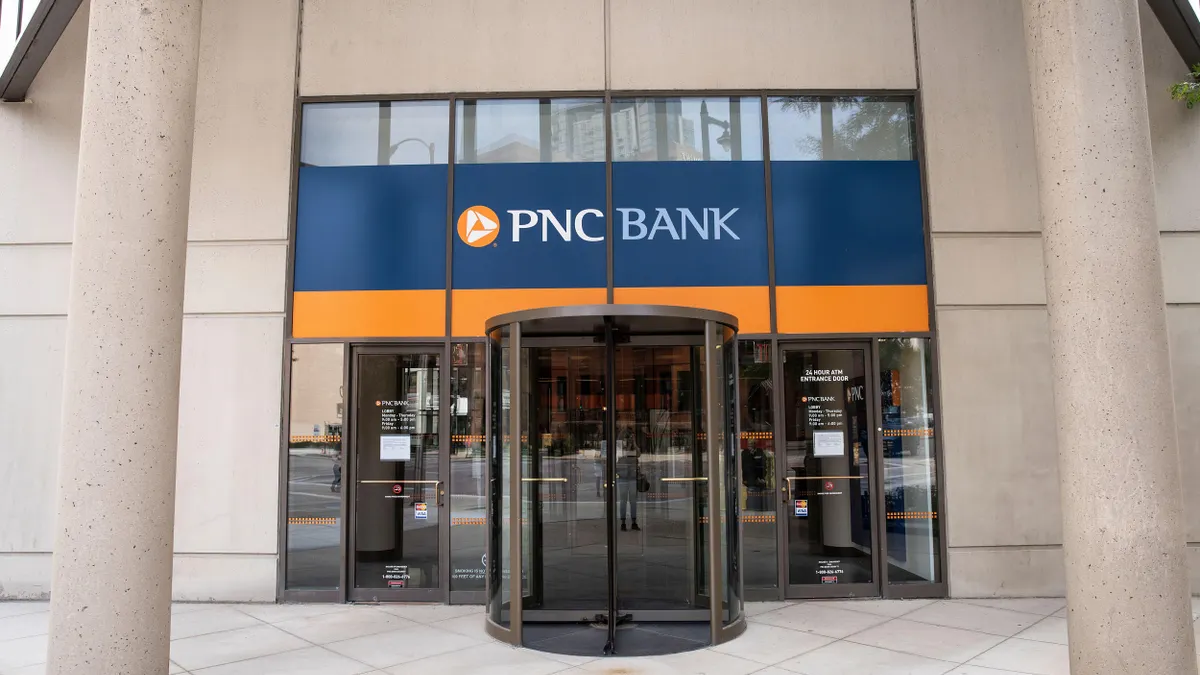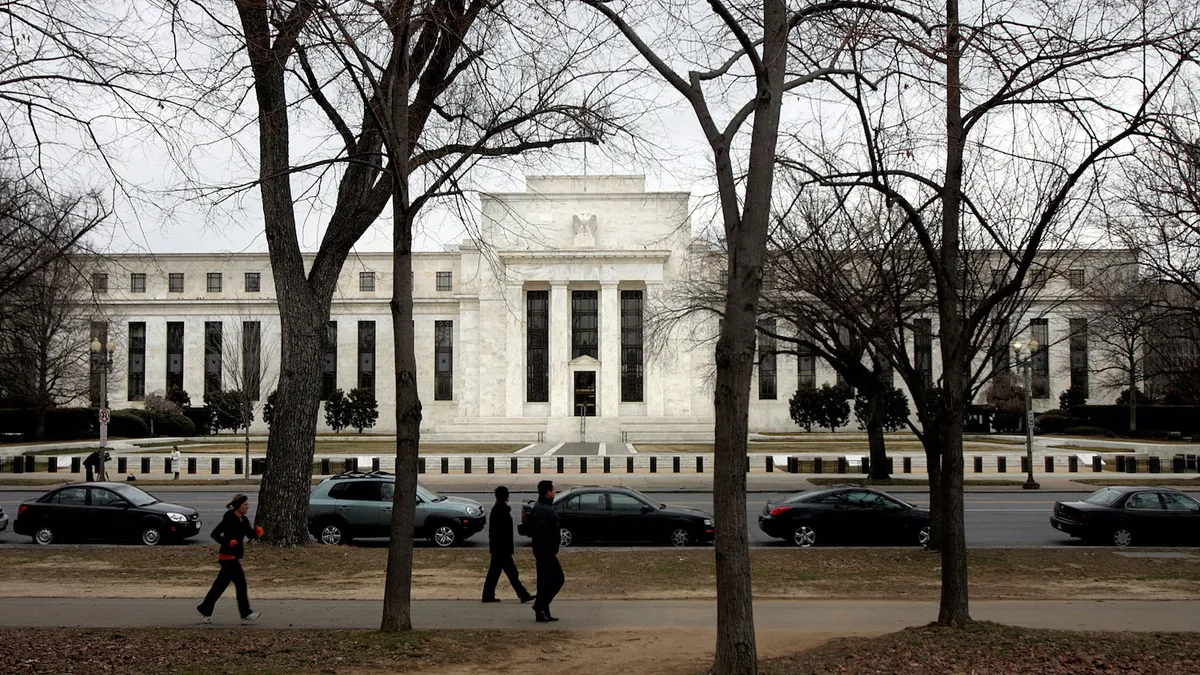Federal Reserve Gov. Michelle Bowman on Thursday cautioned against any significant changes to the Fed’s regulatory framework, including higher capital requirements for banks, in light of recent high-profile failures.
Speaking at a symposium in Frankfurt, Germany, Bowman called for the Fed to engage an independent third party to analyze the failure of the Silicon Valley Bank. She said the report should be broader in scope and include events of the weekend following the SVB failure and issues with the lender’s regulatory framework and Fedwire services.
“This would be a logical next step in holding ourselves accountable and would help to eliminate the doubts that may naturally accompany any self-assessment prepared and reviewed by a single member of the Board of Governors,” she said.
The bank runs that led to the collapse of SVB, Signature Bank, and First Republic were the result of poor management and regulatory oversight, Bowman noted. These recent failures should prompt the Fed to focus on identifying critical risks within banks and to take proper measures to push the bank’s board to resolve them, she pointed out.
She noted that though the run was fueled by traditional concerns, it spread much faster than previous ones due to modern communication methods and social media and “was enabled through new technology that allows customers to move money on a scale and at a velocity not previously accessible directly to customers.”
Adjustments needed
Bowman touched upon necessary and targeted adjustments needed in the banking regulations, namely examining deposit insurance reform, the treatment of uninsured deposits, and a reconsideration of current deposit insurance limits.
According to Bowman, the focus should be on the remediation of known issues with bank supervision and those that emerge after a close investigation of these events.
“We should avoid using these bank failures as a pretext to push for other, unrelated changes to banking regulation,” she added.
“The unique nature and business models of the banks that recently failed, in my view, do not justify imposing new, overly complex regulatory and supervisory expectations on a broad range of banks,” Bowman said. “If we allow this to occur, we will end up with a system of significantly fewer banks serving significantly fewer customers. Those who will likely bear the burden of this new banking system are those at the lower end of the economic spectrum, both individuals and businesses.”
Bowman hinted at Vice-Chair Michael Barr’s findings in her speech. The report published last month found supervisory failures and poor bank management as the key reasons that led to SVB’s collapse.
“SVB’s failure demonstrates that there are weaknesses in regulation and supervision that must be addressed,” Barr said in a statement at that time. “Regulatory standards for SVB were too low, the supervision of SVB did not work with sufficient force and urgency, and contagion from the firm’s failure posed systemic consequences not contemplated by the Federal Reserve’s tailoring framework.”
Though she did not directly mentioned Barr, Bowman noted that any shift from the tailored approach to regulation and risk-based supervision would be like going in the wrong direction for any conversation on banking reforms.
“Calls for radical reform of the bank regulatory framework — as opposed to targeted changes to address identified root causes of banking system stress — are incompatible with the fundamental strength of the banking system,” she said. “I am extremely concerned about calls for casting aside tiering expectations for less complex institutions, given the clear statutory direction to provide for appropriately calibrated requirements for these banks.”
Bowman was appointed to the Fed by former President Donald Trump, while Barr was nominated to his post by President Biden.
Other players
In her speech, Bowman also brought up the topic of “non-bankers” flooding the banking space. She mentioned the consistent growth in banking-as-a-service partnerships in which banks partner with a fintech to offer innovative products and services.
“Even without these external influences, bankers who leverage innovation as a significant aspect of their business model often have a mindset that is compatible with continued innovation and are less sensitive to regulatory and supervisory communications,” she said. “I view these trends as part of a cultural shift within these banks.”
She asked supervisors to use all the required tools to ensure the new entrants in the banking space understand the risk involved, specifically issues that could topple a bank.
“These include concentration risk, liquidity risk, and interest rate risk. We have the tools to address these issues, but we need to ensure that examiners focus on these core risks and are not distracted by novel activity or concepts,” the Fed governor noted.
Bowman also wants to review and update the Fed services, including the Fedwire, since the central bank “serves as the ‘lender of last resort’ to the banking system, providing loans at the discount window since the early part of the twentieth century,” she said.
The former banking commissioner of Kansas emphasized the importance of the combination of supervision and regulation to address any threat in the banking industry.
“In addition to being transparent, supervision must be nimble and responsive because the financial services landscape and bank risks evolve over time,” Bowman said.
“Supervision must also complement regulation. While regulation is a critical tool, it operates with a significant lag for most developed banking systems. This is where supervision can complement regulation to address emerging threats and risks by allowing supervisors to pivot to those fundamental risks that may be most salient based on that bank's business model and evolving economic conditions,” she added.
Inflation was not off the list during Bowman’s speech. The Fed is likely to raise the interest rates further and hold them at a higher rate to cool down the price pressure and stabilize the labor market, she noted.
“Should inflation remain high and the labor market remain tight, additional monetary policy tightening will likely be appropriate to attain a sufficiently restrictive stance of monetary policy,” Bowman said Friday. “I also expect that our policy rate will need to remain sufficiently restrictive for some time to bring inflation down and create conditions that will support a sustainably strong labor market.”





















